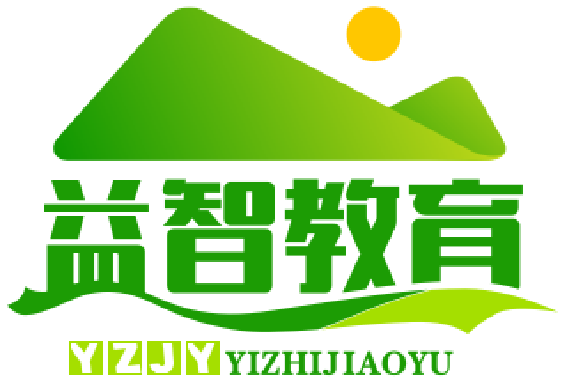南开大学金融专硕项目在国内享有盛誉,其导师团队实力雄厚,研究方向覆盖金融理论与实务的多个前沿领域,选择导师时,需结合自身研究方向、职业规划及导师的学术背景、业界资源、指导风格等因素综合考量,以下从研究方向、导师特点、业界资源等维度,详细解析南开金融专硕导师的选择建议,并列举部分代表性导师供参考。

研究方向与导师匹配度
南开金融专硕导师的研究方向主要可分为五大类,考生可根据兴趣和职业目标优先匹配对应领域的导师:
公司金融与资本市场
该方向导师侧重企业投融资、公司治理、资产定价等领域,适合计划进入券商投行、基金公司、企业投融资部等岗位的学生。
- 马静如:教授,博士生导师,研究方向为公司金融、行为金融学,其团队注重理论与实证结合,课题多聚焦资本市场微观结构,近年来在《经济研究》《金融研究》等顶级期刊发表多篇论文,指导风格严谨,适合有学术深造意愿的学生。
- 李志辉:教授,研究领域为公司财务、风险管理,拥有丰富的案例教学经验,曾参与多项企业财务咨询项目,对实务操作理解深入,适合计划进入企业财务部门的学生。
金融工程与量化投资
该方向导师专注于金融衍生品、量化策略、机器学习在金融中的应用等,适合对编程、数据建模感兴趣,目标为券商衍生品部、对冲基金、量化私募的学生。
- 张尧:教授,博士生导师,研究方向为金融工程、资产定价,精通随机分析、数值计算方法,指导学生开发的量化策略曾在实盘比赛中获奖,团队科研氛围浓厚,要求学生具备较强的数学和编程基础。
- 周欣:副教授,研究领域为机器学习与金融科技,擅长Python、R语言在金融数据分析中的应用,课程中融入大量金融科技实践案例,适合对金融科技感兴趣的学生。
国际金融与宏观政策
该方向导师关注国际资本流动、汇率政策、金融监管等,适合计划进入央行、政策性银行、跨国金融机构或从事宏观研究的学生。
- 范小云:教授,博士生导师,南开大学金融学院院长,研究方向为国际金融、金融稳定,在系统性风险、跨境资本流动领域成果丰硕,曾参与国家金融政策咨询,学术视野开阔,资源丰富,适合有志于从事宏观政策研究的学生。
- 陈典发:教授,研究领域为开放经济宏观金融、货币政策,教学风格深入浅出,注重政策分析框架的培养,课程中常结合国际热点事件(如美联储加息、人民币国际化)展开讨论,适合对宏观政策感兴趣的学生。
金融科技与普惠金融
该方向导师聚焦区块链、数字货币、供应链金融等新兴领域,适合进入互联网金融企业、金融科技公司或从事金融创新研究的学生。
- 田存志:教授,博士生导师,研究方向为金融科技、风险管理,主持多项国家自然科学基金项目,对数字货币监管、区块链技术应用有深入研究,团队与蚂蚁集团、京东科技等企业有合作项目,提供丰富的实习资源。
- 刘澜飚:教授,研究领域为普惠金融、互联网金融,长期关注农村金融、小微金融发展,指导学生参与乡村振兴金融创新课题,实践导向强,适合计划进入NGO或政策研究机构的学生。
保险与风险管理
该方向导师侧重保险精算、风险管理、社会保障等,适合进入保险公司、再保险公司、保险资管或企业风险管理部门的学生。
- 朱锦尘:教授,博士生导师,研究方向为保险学、风险管理,南开大学风险管理与保险学系主任,在巨灾保险、养老保险领域成果显著,团队与平安保险、中国人保等企业有深度合作,课程中包含精算师考试内容指导,适合有志于从事保险精算的学生。
导师选择的关键考量因素
学术背景与科研能力
优先选择具有国家级课题(如国家自然科学基金、社科基金)、在权威期刊发表多篇论文的导师,这类导师通常具备较强的科研资源,能为学生提供学术指导(如论文写作、学术会议参与),范小云教授主持的国家社科基金重大项目“系统性金融风险的评估与防范”为团队学生提供了高质量的研究平台。
业界资源与实务经验
对于计划直接就业的学生,选择具有业界背景(如曾任职于券商、银行、监管机构)或与金融机构有深度合作的导师更具优势,田存志教授与金融科技企业的合作项目,为学生提供了进入头部互联网金融公司的实习机会;马静如教授参与的企业财务咨询项目,有助于学生积累实务经验。
指导风格与个人匹配
- 严格型导师:如张尧教授,对学生科研要求高,需定期汇报进展,适合有学术追求、能承受较大压力的学生;
- 宽松型导师:如刘澜飚教授,给予学生较多自主空间,适合自律性强、希望自主规划研究方向的学生;
- 实践型导师:如朱锦尘教授,注重案例教学和行业实践,适合计划就业的学生。
职业规划导向
- 学术导向:优先选择博士生导师(如范小云、马静如),其团队通常有完整的科研培养体系,支持学生继续攻读博士或进入高校;
- 就业导向:优先选择有业界资源、课程中融入实务内容的导师(如田存志、李志辉),帮助学生积累行业人脉和技能。
代表性导师特点对比(表格形式)
| 导师姓名 | 职称 | 研究方向 | 学术/实务侧重 | 指导风格 | 适合学生类型 |
|---|---|---|---|---|---|
| 范小云 | 教授、博导 | 国际金融、金融稳定 | 学术为主 | 严谨、视野开阔 | 有志于学术/政策研究 |
| 张尧 | 教授、博导 | 金融工程、资产定价 | 学术为主 | 严格、科研导向 | 数学/编程基础好,学术意愿强 |
| 田存志 | 教授、博导 | 金融科技、风险管理 | 学术+实务 | 宽松、资源丰富 | 对金融科技感兴趣,计划就业 |
| 马静如 | 教授、博导 | 公司金融、行为金融 | 学术为主 | 严谨、细致 | 有学术深造意愿,擅长实证研究 |
| 朱锦尘 | 教授、博导 | 保险学、风险管理 | 学术+实务 | 实践、案例导向 | 计划进入保险行业/精算领域 |
选择建议与注意事项
- 提前联系导师:通过邮件或课题组会议与导师沟通,了解其当前研究课题、对学生能力的期望,以及未来1-2年的培养计划,避免信息不对称。
- 参考学长学姐经验:通过学院官网、导师评价平台(如“导师评价网”)或校友群了解导师的实际指导风格、学生就业去向等。
- 平衡学术与就业:若两者皆有诉求,可选择“学术+实务”复合型导师(如田存志),既能参与科研项目,又能积累行业资源。
相关问答FAQs
Q1:南开金融专硕导师选择时,学术型导师和实务型导师哪个更重要?
A:取决于个人职业规划,若计划读博或进入高校/研究机构,学术型导师(如范小云、张尧)更合适,其科研资源和学术指导能帮助提升学术能力;若计划直接就业,实务型导师(如田存志、朱锦尘)的业界资源和实践经验更具优势,能帮助学生快速适应职场。
Q2:如何判断导师是否适合自己?
A:可从三个维度综合判断:一是研究方向是否与自身兴趣匹配(如对量化投资感兴趣,优先选择张尧、周欣);二是指导风格是否适应(如自律性弱的学生避免选择严格型导师);三是职业资源是否符合目标(如计划进入金融科技企业,优先选择与该领域有合作的导师),通过邮件沟通、旁听课程或咨询学长学姐,进一步确认导师的实际培养模式和学生反馈。











